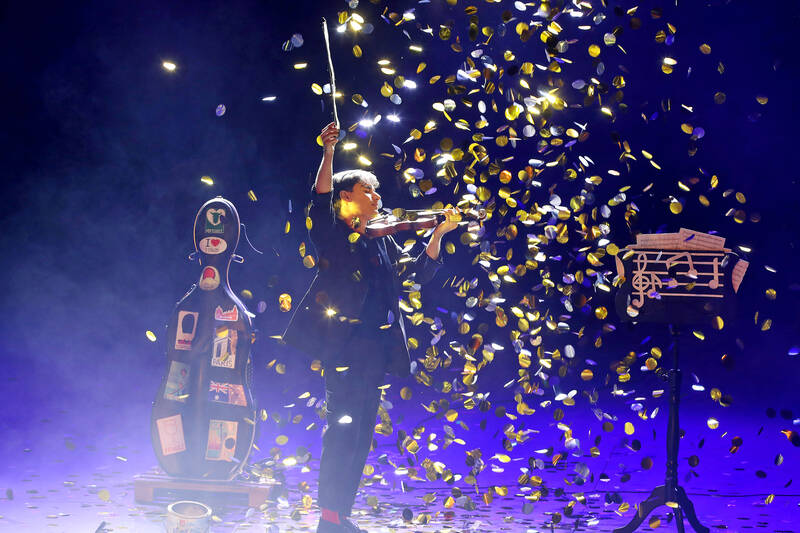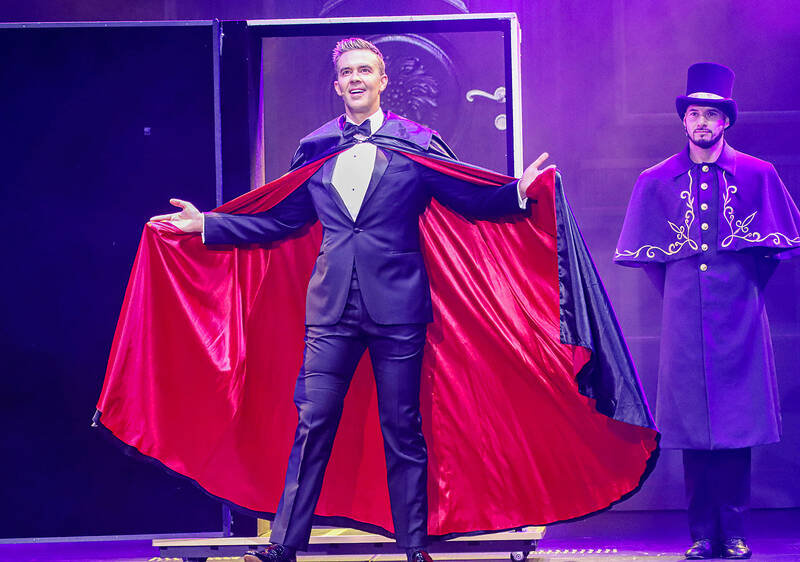The fool is wise. The clown is sad. The trickster is honest. These may be cliches, but there is a truth to them. Artists who excel in their field often thrive on contradiction; indeed, their art seems to depend on it. To know what you are, you need to know what you are not. This sense of conflict and tension, of two opposites being true simultaneously, is often where great art is born.
The strangest of all the artists may be the magician. Their art can encompass comedy, dance and drama; but there is another dimension to them. They are not quite of this world — the essence of their art is that it violates natural law. Part of what they conjure is a fleeting sense of madness, as they show us things that cannot happen. And yet, of all the artists, it transpires that it is magicians who tend to have the healthiest mind, the firmest grasp of reality.
Psychologists at Aberystwyth University reported this week that magicians may be less prone to mental health difficulties than those who work in other art forms. In fact, they go further: the magicians they studied were less likely to experience phenomena such as hallucinations and cognitive disorganization than the general population.

Photo: EPA-EFE
Just as there may be many possible ways to perform an illusion, there are many possible reasons why this may be the case. The magician Sara Crasson suggests a few: that many children turn to magic to confound bullies and build confidence (Paul Daniels, for one, suffered from crushingly low self-esteem in his early years); that the craft requires great deliberation and clarity of thought; that magicians tend to form communities offering support and encouragement.
And to be a magician is typically to be a student of magic: they are likely to know much about the history of the art form and to have a sense of their place within it. But perhaps there are deeper reasons, too, relating to the very nature of their art.
It can be asserted with some confidence that the magician knows reality better than anyone. The magician needs a keen understanding of the boundaries of possibility. They need to know what cannot be done in order to do it. They must appreciate the human capacity for belief, and the methods by which that capacity can be exploited. The magician must also know wonder; they must have felt it themselves, and want to share that feeling.

Photo: AP
The magician knows their own limitations. The magician knows that they cannot do magic. So does their audience. So a sophisticated and elaborate kind of theater is conjured into being: a realm of honest dishonesty.
The audience is paying to be fooled by a professional deceiver, and this arrangement pleases everyone concerned. The audience simultaneously desires to know the secret and fears that same knowledge, because knowing the secret destroys all illusion.
This may be why some of the greatest magicians have also been some of the greatest skeptics. John Nevil Maskelyne, one of the leading stage acts in Victorian times, discredited the claims of conjurors who claimed mystical powers, and exposed at least one fraudulent medium. Harry Houdini was an assiduous debunker of bogus mystics. More recently, Penn & Teller have made skepticism fundamental to their work.
James Randi devoted much of his life to disproving claims of supernatural powers; he was particularly alert to the credulity of scientists, whom he believed were far easier to con than magicians. Those who know the ways of the conjuror know how they might be used to take advantage of the unwary.
Of course, magicians come in various forms. There are the pure entertainers, be they from the typically British patter tradition of Daniels, or the grand illusionists more associated with the US; these do not claim to be any more than skilled performers (when David Copperfield makes the moon disappear in February, as he has promised, no one will believe it has actually ceased to exist).
Then there are the more ambiguous kinds, such as David Blaine, or, to some extent, Derren Brown, or the late master, David Berglas, whose personas convey a sense of enigma, and whose audiences could sometimes seem to be under a kind of spell.
There are still those who say they work genuine miracles. There are magicians who imagine, invent, push the frontiers of the possible; there are magicians who refine the work of others, or who seek merely to repeat it. The study notes that “many magicians perform familiar tricks or variations of them without feeling the need to innovate,” putting them at odds with other creative types. It would be interesting to know how each kind of magician might fare in the university’s research.
But ultimately, the magic of the magician requires a rootedness in the real. This is not to say that magicians never struggle with their mental health — and we may be aware of some particularly tragic examples. But knowing the real from the illusory or delusory, while also celebrating wonder, sounds like as sensible a way to stay mentally healthy as any job provides.
Medical professionals say there are five steps to mental wellbeing: connect with other people; be physically active; learn new skills; give to others; and pay attention to the current moment. That, and so much more, is the life of the magician, those strange people who may have found the secret to an extraordinary normality.

The Democratic Progressive Party (DPP), Chinese Nationalist Party (KMT), and the country’s other political groups dare not offend religious groups, says Chen Lih-ming (陳立民), founder of the Taiwan Anti-Religion Alliance (台灣反宗教者聯盟). “It’s the same in other democracies, of course, but because political struggles in Taiwan are extraordinarily fierce, you’ll see candidates visiting several temples each day ahead of elections. That adds impetus to religion here,” says the retired college lecturer. In Japan’s most recent election, the Liberal Democratic Party lost many votes because of its ties to the Unification Church (“the Moonies”). Chen contrasts the progress made by anti-religion movements in

Taiwan doesn’t have a lot of railways, but its network has plenty of history. The government-owned entity that last year became the Taiwan Railway Corp (TRC) has been operating trains since 1891. During the 1895-1945 period of Japanese rule, the colonial government made huge investments in rail infrastructure. The northern port city of Keelung was connected to Kaohsiung in the south. New lines appeared in Pingtung, Yilan and the Hualien-Taitung region. Railway enthusiasts exploring Taiwan will find plenty to amuse themselves. Taipei will soon gain its second rail-themed museum. Elsewhere there’s a number of endearing branch lines and rolling-stock collections, some

Could Taiwan’s democracy be at risk? There is a lot of apocalyptic commentary right now suggesting that this is the case, but it is always a conspiracy by the other guys — our side is firmly on the side of protecting democracy and always has been, unlike them! The situation is nowhere near that bleak — yet. The concern is that the power struggle between the opposition Chinese Nationalist Party (KMT) and their now effectively pan-blue allies the Taiwan People’s Party (TPP) and the ruling Democratic Progressive Party (DPP) intensifies to the point where democratic functions start to break down. Both

This was not supposed to be an election year. The local media is billing it as the “2025 great recall era” (2025大罷免時代) or the “2025 great recall wave” (2025大罷免潮), with many now just shortening it to “great recall.” As of this writing the number of campaigns that have submitted the requisite one percent of eligible voters signatures in legislative districts is 51 — 35 targeting Chinese Nationalist Party (KMT) caucus lawmakers and 16 targeting Democratic Progressive Party (DPP) lawmakers. The pan-green side has more as they started earlier. Many recall campaigns are billing themselves as “Winter Bluebirds” after the “Bluebird Action”